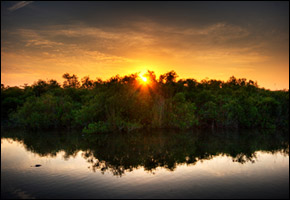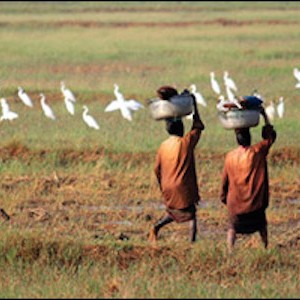WWF Report Scrutinizes Germany’s Water Consumption

A new report shows that half of Germany’s water consumption comes from virtual water. On average, each German resident uses the equivalent of 25 bathtubs of water a day, half of which comes indirectly with the industrial and agricultural products that the country imports mostly from dry areas of the world, according to a study released in August by the German branch of the World Wildlife Fund for Nature (WWF), Deutsche Welle reported Tuesday.
Germany uses nearly 160 billion cubic meters of water a year — 73 percent of which goes to agriculture, 23 percent to industry and about 4 percent to domestic use.
Even though direct water consumption has fallen to about 124 liters per person a day, the indirect consumption –- or virtual water used — equals around 5,288 liters per person per day. This ranks the country in the upper third of water consumers in Europe.
Dubbed by the Water Footprint Network –- an international non-profit foundation –- the concepts of “virtual water”and “water footprint” measure, in the context of trade, the quantity of water used in the production of goods and services. According to WWF, Germany imports virtual water mainly from Brazil, the Ivory Coast and France, but also from thirsty regions of the world such as Kenya, Turkey and Spain.
“The lion’s share of water consumption is found in the food production process,” said Dorothea August, who oversaw the WWF study. “The water is used to produce the food goods in very dry regions, which are then exported to Germany.”
According to the WWF, imported coffee, cocoa, oil seeds, cotton, pork meat, soy beans and beef have the largest water footprint. Every cup of coffee consumed in Germany, for example, costs about 140 liters of water elsewhere in the world.
“Water problems are often closely tied to the structure of the global economy,” said professor Arjen Y. Hoekstra, creator of the water footprint concept and scientific director of the Water Footprint Network. “Many countries have significantly externalized their water footprint, importing water-intensive goods from elsewhere. This puts pressure on the water resources in the exporting regions, where too often mechanisms for wise water governance and conservation are lacking.”
Read more here.
Read the official report in German here.
Sources: Deutsche Welle, WWF Deutschland (in German), Water Footprint Network.
, a Bulgaria native, is a Chicago-based reporter for Circle of Blue. She co-writes The Stream, a daily digest of international water news trends.
Interests: Europe, China, Environmental Policy, International Security.






Leave a Reply
Want to join the discussion?Feel free to contribute!